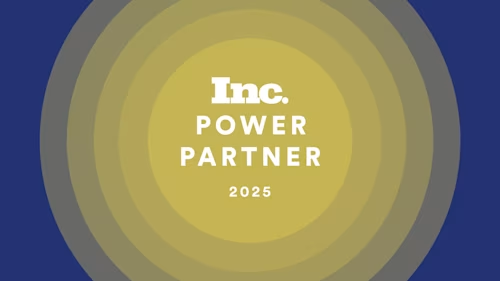
Best Practices for Successful Contract Renewals
Learn how to balance growth with retention with these best practices for successful contract renewals.

In the current economic climate, retaining current customers has become more important than ever. Yet many companies continue to focus on driving growth instead of retaining their existing customers.
Focusing on growth is a good strategy for start-ups, but as a business grows, it is important to balance both growth and retention. Studies have shown that it’s far more expensive to sign a new customer than to renew an existing one. So why do companies continue to pour money and resources into driving growth? Perhaps it’s because they have not yet built out the team and processes to handle the install base and, more specifically, their customer renewals.
Balance growth with retention
Part of managing customer renewals is deciding where to spend your time. When you’re juggling hundreds (or even thousands) of customers, it becomes essential to prioritize your time and resources.
You want to spend time with all of your customers as much as you possibly can. But the reality is there’s not an effective way to scale that approach. You have to prioritize.
Getting the best ROI means investing in the right relationships. To make this easier, create customer segments that guide your resource allocation and prioritize customers based on their value, business potential and specific needs.
When evaluating your customers, segment customers by the following criteria:
How large they are: Categorize customers by their spending levels, such as high-spend or low-spend. You can allocate resources based on revenue potential and importance. But be careful to ensure you are not only looking at their current spend. For example, a smaller customer with a single use case that has 5,000 employees is a customer you want to prioritize.
The industry they’re in: Consider the specific industries your customers belong to. Certain industries may have unique needs, compliance requirements or growth opportunities that deserve special attention.
How often they use your product: Evaluate how customers use your product or platform. Identify customers with complex use cases requiring additional support, customization or strategic guidance.
Their growth potential: Assess the growth potential of each customer based on their current usage, employee count, annual revenue, expansion plans or industry trends. Prioritize customers who have the potential to grow and become long-term partners and advocates for your company.
Once you complete the segmentation process, your next step is to match customers with the right renewal resources.
Small Business: In an ideal world, you’d give all your customers the same level of service, no matter their size. But when you have to prioritize resources, pair smaller customers with an automated contract-renewal program. If you feel they need a human touch, you can create an at-scale renewal team that specifically handles these customers but oversees a high volume of renewals.
Mid-Market: On the other hand, pair customers with high spending, complex needs or growth potential with a dedicated resource such as a renewal manager or an account manager. Having a named resource focused on these customers will help ensure the customer is realizing value with your product and help to drive longer-lasting mutually beneficial relationships
Large Enterprises: The bigger the company, the more potential for high-value contracts. These customers should be aligned with your most experienced renewal managers or account managers. Often you may have other resources aligned as well, such as a technical account manager or solutions architect. A team approach is needed with these customers to address any and all obstacles/opportunities that may come up.
Lastly, don’t weigh a customer’s importance solely on the money they’re spending now. Identify key accounts of strategic importance, and assign resources to nurture these relationships. Think of high-profile customers, influential industry players or organizations with big revenue potential.
The four pillars of effective contract renewal
Renewal managers look for ways to minimize attrition, lock in favorable terms and identify upsell opportunities. But without a standardized renewal process, it’s hard to know what’s working and what isn’t. A solid framework to guide your renewal process makes it easier to find repeated success.
Forecast
Start by understanding the health of each customer to get a feel for whether or not they represent a potential growth opportunity or future risk. Conducting research and analyzing data points are critical to determining how to forecast your customers’ potential. This could include reviewing product and feature adoption, past engagement notes, LinkedIn and even searching for relevant trending news. Ultimately, forecasting helps your team know which customers to prioritize, and it can be a great tool to get a view of future revenue and risk.
2. Orchestrate
Then, decide who engages with the customer—whether that’s a renewal manager, the customer success team, an account executive, or even someone from your executive team. The exact mix of people who should engage with a customer up for renewal depends on the account's size, health and importance. Aim to assemble the right team and allocate resources effectively to increase the chances of a continued relationship.
As your customer base scales and AI tools become more refined, lean on automation. But make sure you still communicate in a personal and human way.
For example, sending an automated thank-you note or an AI-drafted follow-up email saves time but still delivers a high-touch experience. But for a quarterly business review (QBR) recap with nuanced next steps? Or when you need to make that strategic upsell pitch? These kinds of communications need TLC from a real human being.
The best client relationships are grounded in respect, connection and joy. Moving beyond transactional interactions builds stronger, long-lasting relationships with your customers, which snowballs into increased customer loyalty and satisfaction.
3. Engage
Next, reach out to your customer to conduct a health check with the team you’ve put together. Ask thoughtful questions to gauge customer health, and listen attentively to their responses. Many of the questions you’ll want to ask will relate back to the research done during the forecasting stage. Based on their responses, connect them to resources that will help them get more value out of your product, and they’ll be more likely to renew.
Another great way to learn more about customer needs is a QBR. When you understand where your customer is at, you can partner with them to solve their challenges (and subsequently increase usage too). To make these reviews more collaborative, send questionnaires beforehand to discover which topics your customer wants to discuss. It should be a collaborative process.
When it comes to engaging your customers, avoid waiting until the last minute. Last-minute renewal conversations become solely about price and there’s little mutual trust. Building trust takes time, and engagement should start 6–18 months before the renewal date, depending on the size and forecast of the customer. Take every opportunity to engage with your customers, understand their priorities and provide value. Outside of QBRs, you can schedule on-site visits or invite customers to events to get to know them better.
4. Execute
Here’s where the groundwork you laid through forecasting, orchestrating and engaging pays off. Based on all the information you’ve uncovered and the trust you’ve earned, you can build a renewal proposal that’s appealing to the customer. Offer customized solutions and guidance that show you understand their business. Your goal is not just to get your contract signed, but to act as a trusted expert while fostering a long-term, mutually beneficial relationship.
Get your renewal tech stack in shape
If you’re a renewals professional dealing with hundreds or thousands of customer accounts, things can get disorganized fast. Without processes and standardization, you could risk losing valuable customers.
Leading companies are using technology to ensure contract renewals are a revenue growth factor, not a cost center.
Here are some recommended best practices that work well for renewal teams:
A central contract repository: It’s important to know when and how to use contract automation. Find the right balance between streamlining the renewal process and maintaining a personal touch with customers. Keeping all your contracts in a single repository makes it easy to track contract renewal dates, send automated notifications and reduce contract value leakage.
CRM for internal standardization: Salesforce is our system of record. From partner teams to account executives and customer success managers, we use it as our CRM for seamless collaboration and consistent data management.
Data insights: To gain a deeper understanding of customer usage patterns, many teams turn to Tableau. It answers valuable questions like: How many emails are renewal professionals sending? How many licenses do customers have? Are customers using the web application or an API? This helps shape renewal strategies and leads to more informed decision-making.
Collaboration tools: Google Suite has taken Docusign to the next level of internal collaboration and organization. Google Workspace helps teams work efficiently, share information effortlessly and create compelling presentations for customers.
Outreach for targeted interactions: This platform helps engage customers effectively, especially long-term customers. With Outreach, teams simplify and automate workflows to speed up time to renewal without sacrificing quality. This kind of tech can ensure customers get the attention they deserve during the renewal process.
AI for research and insights: The possibilities of AI in the contract renewal landscape are rapidly evolving. For example, Docusign Insight unlocks customer insights in every contract. AI can extract information about customer preferences, strategic goals and the potential impacts of digital transformation. While currently focused on research, the potential for AI to play a role in auto-renewals looms on the horizon.
Final thoughts for anyone creating or refining a renewal process
While satisfying customers is your top priority, you’ll only achieve solid relationships and maximize your financial capacity if your internal systems run like a well-oiled machine.
Remember, long-term customer satisfaction and loyalty are essential to sustainable business growth. If you meet your customers at the negotiation table, provide a superior customer experience and disarm their concerns with deep empathy—you'll lead renewal conversations that make customers feel like valued partners.
Learn more about the resources available to help Docusign customers be successful.
Brett Jones is a senior director of commercial renewal management at Docusign.
Related posts
Docusign IAM is the agreement platform your business needs



